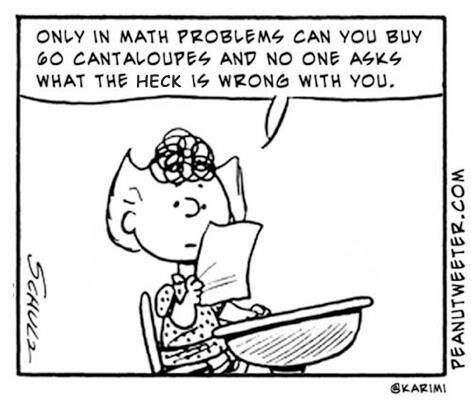Privilege and Oppression: Reverse Racism
- Matt Felton-Koestler
- Jan 31, 2018
- 4 min read
This post is part 3 of 3 in a series responding to three questions from some students who read my post on privilege and oppression in math ed. This post addresses the third question:
3. Why does reverse racism not exist?
I see a difference between two phenomenon: (1) systemic racism and (2) individual racial prejudice.
If I create a system of discriminating against people based on race, then that’s systemic racism. This system will create lasting effects even after many of the “official”/legal components have been eliminated. Examples that have contributed to systemic racism in the U.S. (and other countries) include, but are not limited to, things like redlining (as discussed in one of the video clips from the original post), slavery and subsequent Jim Crow laws in the U.S., ongoing underfunding of schools with predominantly poor, Black, and Latinx students, increasing rates of segregation in schools, biases in sentencing (people of color are more likely to receive longer sentences for similar crimes), unequal enforcement of laws (e.g., Blacks and Latinx are more likely to be imprisoned for drug use than Whites despite very similar levels of usage across races), design of laws to target people of color (e.g., crack vs. cocaine in the war on drugs), standards of beauty, enforcement of hair styles in schools, portrayal of people in the news (the famous example of “looting” vs. “finding” in descriptions of people in Hurricane Katrina being a particularly poignant example). Some of these are official, legally sanctioned actions taken by the government. Some of them are more embedded in the culture. Some of these are over, but some of them continue. Moreover, the economic legacy of many of these forms of discrimination has carried over across generations (this is discussed in the example of redlining in the video clip, but it applies to other forms of discrimination as well).
Individual racial prejudice is someone saying “I hate White people” or “I hate Black people.” It also might take other forms (often subconsciously), like possibly being more likely to cross the street to avoid someone based on the color of their skin or a taxi driver being less likely to stop to pick someone up.
Obviously, anyone can express individual racial prejudice—it goes both ways. But systemic racism really only goes in one direction, especially in the U.S. There’s just no comparison to the historical and ongoing forms of systemic racism that people of color, and most especially Black people, have experienced in the U.S. and most other “Western” countries.
One example that many people would cite as reverse-racism would be affirmative action. Another might be something like a “safe space” or club that is only for Black people (or a women-only club if we are talking about (systemic) sexism). I would point out two key differences between these phenomenon and the systemic racism that existed and exists in the U.S. (1) The intent behind affirmative action and safe spaces is more positive than discrimination against people of color. Affirmative action is meant to address a past wrong—to help make up for the baggage of systemic racism that disadvantages people. Safe spaces are meant to create a safe environment, and in particular a refuge from oppression. This is different than redlining or having exclusive country clubs or neighborhood policies—these were done because people of color were literally seen as sub-human or inferior to White people. You may still disagree with affirmative action and/or safe spaces for a variety of reasons, but I do think that difference is important to note. (2) The effect and scale of policies like affirmative action and safe spaces simply does not compare to the historical and ongoing levels of systemic racism against people of color in the U.S. It’s just not on the same level.
So what words should we use? As I said in the previous post, I personally don’t tend to care a ton about the particular term used. I don’t have “the answer” about the best terms to use and I sometimes use different terms in different contexts. I see a few choices. (a) I can use the terms I used above and leave “racism” relatively undefined. (b) I can use racism the way I did in the blog and the way many other academics do, which is basically racism = systemic racism. This makes reverse-racism impossible. (c) I can use racism to include both systemic racism and individual racial prejudice. This would allow for reverse-racism, because it would include someone saying “I hate White people.”
Personally, I am okay with option (a) or option (b). However, I do have a bit of an issue with option (c) because it lumps together two phenomenon that are really quite distinct. Someone saying “I hate White people” has a much different impact/effect in our society because it is not backed up by systemic racism. It’s still terrible and bad to discriminate against White people based on the color of their skin, but it is, from my perspective, a different phenomenon than discriminating against people of color, because of the historical and ongoing systemic forms of discrimination. Moreover, I think it downplays the legacy of (systemic) racism that people of color people have experienced if I lump these two different phenomenon together.
So that’s why, for me, there’s no such thing as reverse-racism.
Previous Post in Series: Missing Content
Comment
Leave a comment below, reply to my Tweet, or comment on my Facebook post about this.
Short Link for This Post: https://goo.gl/6tVHJ


Comments